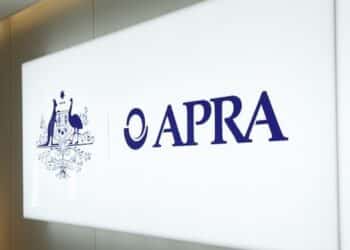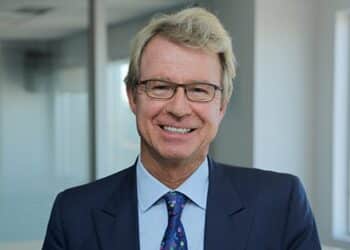Last month, six new exchange-traded funds (ETF) launched on the ASX, with a third of these being actively managed. But discussion has been brewing of late regarding the obvious struggle active managers are having in attracting investor money – a trend that hasn’t prevented more from entering the market.
Namely, according to recent research by Stockspot, while there are 50 ETF providers on the ASX, just 11 of them control 97.5 per cent of the assets, and all but three of those are index-focused.
The remaining 39 active ETF managers share just 2.5 per cent of the ETF market between them.
Speaking to InvestorDaily, Arian Neiron, managing director and CEO of VanEck Asia-Pacific, said the surge in active ETFs on the ASX is less a response to investor demand and more a “push strategy” by issuers looking to capitalise on the growing popularity and asset flows into index ETFs.
“One could argue that the hard-won reputation of ETFs, in general, has given active ETFs an advantage they haven’t necessarily earned, as the implication is that they would be superior to passive funds,” Neiron told InvestorDaily.
He said that while the active ETF sector “looks impressive on paper”, with over 100 products and a combined total of more than $40 billion in assets, “these numbers are misleading”.
“Many of these active ETFs are not discrete products per se but are made up of units from existing unlisted managed funds,” Neiron said.
“Further, circa 75 per cent of that AUM has actually flowed into the unlisted portion of the managed funds, not the active ETFs, and therefore is not representative of the genuine demand for active ETFs in Australia”.
According to him, the approach used by “most” active managers in Australia has not been product development, but rather “using active ETFs as an additional distribution channel for existing funds”.
“This approach does not change the underlying investment strategy. If their investing edge is not existent e.g. alpha is not prevalent nor persistent and the investment process is not repeatable in achieving alpha, then the likelihood of appealing to the wider audience that represents the ETF investing community is low,” Neiron added.
Analysis from VanEck has found that as the active ETF sector grows by size and assets, an increasing portion of reported flows stem from unlisted monies. According to the ETF provider, on 31 March 2020, a little over half of assets under management (AUM) across 43 active ETFs were unlisted monies.
As at 31 March 2025, this was over 60 per cent across 134 products.
Turning to the popularity of passive over active ETFs, Neiron said while investors are attracted to the former’s lower fees, active ETFs have had a number of challenges over the years, including underperformance.
“Australia investors prize value-for-money, and if an active ETF fails to outperform the equivalent index-tracking fund that charges lower fees, it will not remain in portfolios for very long,” he said.
Moreover, he noted, “style drift” is “another major issue” – where a fund’s investment style or strategy moves away from the original premise.
“This is where track record and being true-to-label is of paramount importance,” Neiron said.
“We think Australian investors do pay attention to a fund manager’s reputation for well-designed, high-performing investment strategies as well.
“We have observed that when several ETFs targeting the same or similar asset classes launch in close proximity, the fund manager that offers the best credentials typically attracts the lion’s share of flows.”
Also speaking to InvestorDaily, Betashares’ investment strategist, Hugh Lam, said despite the significant increase in the number of active strategies available as an ETF, inflows to these funds have not yet materialised.
This, he said, demonstrates that active ETFs are “far from a panacea for the underlying challenges facing traditional active funds management”.
“Chief amongst the challenges is the growing appreciation that the returns generated by many active managers are often attributable to style tilts they apply – be it growth, value or quality.”
Still, the investment strategist believes the rising trend of active fund managers bringing ETFs to the market doesn’t look set to slow down any time soon.
“In fact, there will likely be more active ETF listings as these managers face an existential struggle to keep the active management philosophy relevant,” Lam said, adding that there are fewer signs that these strategies will attract significant inflows any time soon.
“In our view, active funds can still have a relevant role within an investor’s portfolio if that strategy delivers true alpha or provides exposure to a hard-to-access investment strategy that is uncorrelated to existing investments.”
Moreover, Betashares believes investors will continue to prefer index tracking strategies given their inherent cost effectiveness and role as “convenient portfolio building blocks”.
Last week, Marc Jocum, senior product and investment strategist at Global X, told InvestorDaily that fee-conscious Australian investors are increasingly flocking to low-cost index ETFs, leaving active ETFs struggling to gain traction.
“Most active ETFs charge significantly more than index ETFs, and Australian investors are increasingly fee-conscious, with the bulk of ETF flows going into low-fee investments,” Jocum said.
Like Neiron, Jocum cited performance as another hurdle, with underperformance from high-profile active managers and lingering distrust in some active managers denting investor confidence.
“While some active managers have gained traction in certain niches or specific asset classes, their overall reach remains limited,” he said.
ASX figures show 17 of the 23 ETFs launches so far this year have been actively managed. Yet active ETFs represent only around 20 per cent of total ETF assets and account for just 2 per cent of net flows over the past 12 months.
They do, however, generate about 46 per cent of ETF industry revenue – a result of their higher fees.







